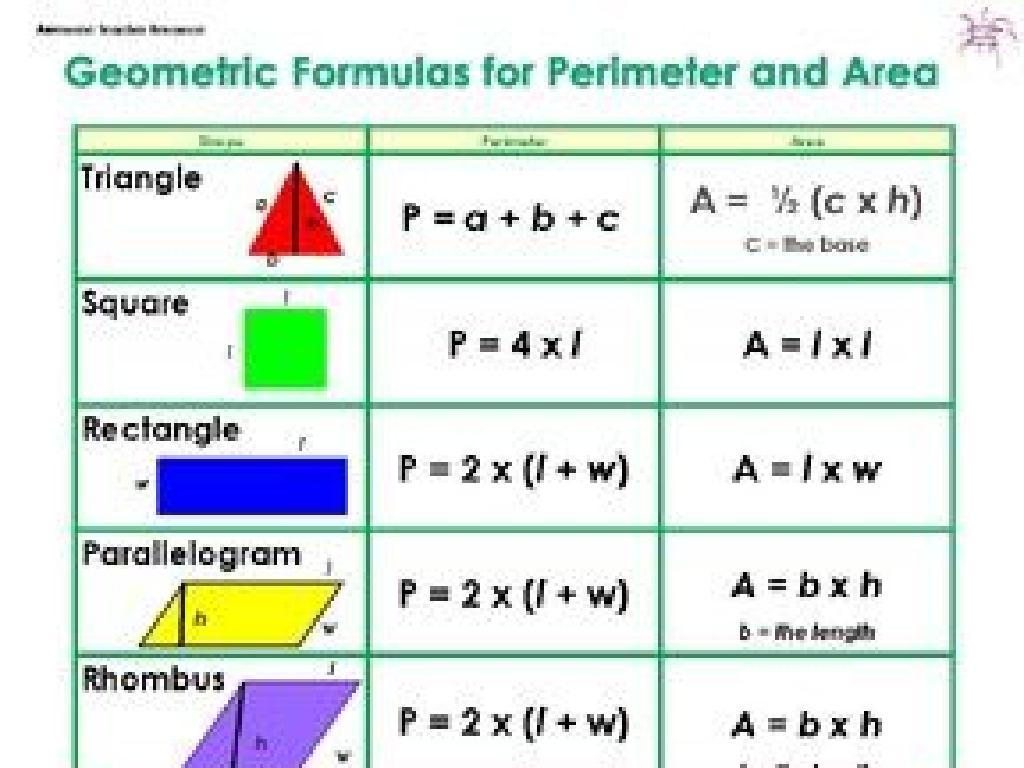Electromagnetics
Subject: Science
Grade: High school
Topic: Physics
Please LOG IN to download the presentation. Access is available to registered users only.
View More Content
Introduction to Electromagnetics
– Electromagnetic force: a fundamental power
– One of the four fundamental forces, influencing many phenomena
– Defining Electromagnetism
– Electromagnetism: the combined effect of electricity and magnetism
– Electricity and magnetism interconnection
– These two forces are aspects of a single electromagnetic force
– Electromagnetism in everyday life
– From smartphones to MRI machines, electromagnetism is key
|
This slide introduces the concept of electromagnetism, a fundamental force that underpins much of our modern world. Begin by explaining that electromagnetic force is one of the four fundamental forces of nature, responsible for a wide range of phenomena from the microscopic to the cosmic scale. Define electromagnetism as the interaction of electric currents or fields and magnetic fields. Clarify the relationship between electricity and magnetism, emphasizing that they are not separate forces but rather two sides of the same coin. Provide examples of how electromagnetism is utilized in everyday technology, such as in communication devices and medical equipment, to illustrate its importance in daily life. Encourage students to think of other examples where electromagnetism is at work.
The Dawn of Electromagnetism
– Oersted’s pivotal experiment
– Discovered relationship between electricity & magnetism by observing compass needle deflection near a current-carrying wire.
– Faraday’s electromagnetic discovery
– Demonstrated electromagnetic induction, leading to the invention of the electric motor.
– Maxwell’s equations
– Unified electricity, magnetism, and light into a set of equations, laying the foundation for modern physics.
– Electromagnetism in modern tech
– From telegraphs to smartphones, electromagnetism is the cornerstone of contemporary technology.
|
This slide provides a historical overview of electromagnetism, highlighting the contributions of key figures like Oersted, Faraday, and Maxwell. Oersted’s experiment showed the connection between electricity and magnetism, which was groundbreaking at the time. Faraday’s work on electromagnetic induction paved the way for electric generators and motors. Maxwell’s equations were a monumental achievement, unifying previously separate phenomena into a comprehensive theory. Understanding these developments helps students appreciate how electromagnetism has shaped the technological landscape, influencing everything from early communication devices to the sophisticated gadgets we use today. Encourage students to think about how different our world would be without these discoveries.
Electric Charges and Fields
– Positive and negative charges
– Charges with same sign repel, opposite attract
– Interaction of charges
– Opposite charges attract, like charges repel
– Electric field visualization
– Field lines show the direction of force on a positive charge
– Field lines representation
– Lines never cross, density indicates field strength
|
This slide introduces the fundamental concepts of electric charges and fields, which are essential to understanding electromagnetism. Start by explaining that there are two types of electric charges: positive and negative. Discuss how these charges interact with each other, with like charges repelling and opposite charges attracting, which is a principle known as Coulomb’s law. Move on to visualizing electric fields, which are invisible forces that surround electric charges. Use the concept of field lines to help students visualize these fields; these lines represent the path that a positive charge would take if placed in the field. Emphasize that the lines provide a way to visualize the strength and direction of electric fields: they start on positive charges and end on negative charges, and the closer the lines are to each other, the stronger the electric field in that region. This foundational knowledge sets the stage for deeper exploration into electromagnetism.
Magnetism and Magnetic Fields
– What defines a magnetic material
– Atomic structure and electron alignment create magnetism.
– Earth: A massive magnet
– Earth’s core generates a geomagnetic field.
– Visualizing fields with iron filings
– Iron filings align along magnetic field lines, revealing patterns.
– Understanding field lines
|
This slide introduces the concept of magnetism, starting with the fundamental question of what makes a material magnetic, focusing on the atomic level and the alignment of electrons. It then draws a parallel to the Earth, which acts as a giant magnet due to the movements in its molten core, creating a geomagnetic field that protects us from solar winds. The slide also explains how to map magnetic fields using iron filings, a simple yet powerful demonstration that visually shows the direction and strength of a magnetic field. The field lines created in such an experiment help students understand the three-dimensional aspect of magnetic fields. Encourage students to think about how compasses work in relation to Earth’s magnetic field and the practical applications of understanding magnetic fields in technology and navigation.
Electromagnetic Induction: Faraday’s Law
– Understanding Faraday’s Law
– Faraday’s Law explains how changing magnetic fields produce electricity.
– Applications in daily life
– Used in power generators, transformers, and induction cooktops.
– Generating current: a demo
– We’ll demonstrate generating electricity using magnets and coils.
– Hands-on activity planned
|
This slide introduces students to the fundamental concept of electromagnetic induction, focusing on Faraday’s Law, which states that a change in magnetic field within a closed loop induces an electromotive force (EMF). Highlight real-world applications such as in the functioning of electric generators and modern appliances like induction cooktops. A hands-on demonstration will show how moving a magnet through a coil can generate an electric current, making the concept tangible for students. Prepare a lab setup for students to experiment with magnets and coils to reinforce the concept. Ensure safety guidelines are followed during the hands-on activity.
Maxwell’s Equations: Pillars of Electromagnetism
– Four fundamental equations
– Gauss’s law, Gauss’s law for magnetism, Faraday’s law of induction, and Ampère’s law with Maxwell’s addition.
– Implications of Maxwell’s Equations
– These equations explain how electric and magnetic fields propagate and interact.
– Unification of electric & magnetic fields
– Maxwell showed that electricity, magnetism, and light are all manifestations of the same phenomenon: the electromagnetic field.
– Applications in modern technology
– Used in designing electric motors, generators, wireless communications, and more.
|
Maxwell’s Equations are a set of four equations that form the foundation of classical electromagnetism, which describe how electric charges and currents produce electric and magnetic fields, and how they change in time. These equations are not only pivotal in understanding the behavior of electromagnetic fields but also in unifying the concepts of electricity and magnetism into a single coherent theory. This unification led to the realization that light is an electromagnetic wave. The implications of Maxwell’s Equations are vast, influencing the development of numerous modern technologies such as telecommunications, medical imaging, and power generation. Encourage students to explore the practical applications of these equations in everyday technology.
Exploring Electromagnetic Waves
– Electric fields generate magnetic fields
– Altering an electric field induces a magnetic field, and this interplay creates electromagnetic waves.
– Light speed: an electromagnetic marvel
– Electromagnetic waves, including light, travel at a constant speed of approximately 299,792 km/s in a vacuum.
– The vast electromagnetic spectrum
– The spectrum includes all wave frequencies, from the longest radio waves to the shortest gamma rays.
– From radio waves to gamma rays
– Radio waves have the longest wavelength, while gamma rays have the shortest, with many types in between.
|
This slide introduces the fundamental concepts of electromagnetism. Begin by explaining how varying electric fields can create magnetic fields, which is a cornerstone of electromagnetic wave theory. Highlight that light itself is an electromagnetic wave, traveling at a constant speed, which is crucial for understanding the behavior of light. Discuss the electromagnetic spectrum, emphasizing its range from the very long radio waves to the extremely short gamma rays, and the implications for different applications like communication, medicine, and astronomy. Encourage students to think about everyday examples of electromagnetic waves, such as microwaves heating food or X-rays used in hospitals.
Applications of Electromagnetics
– Electromagnetics in communication
– Radio, TV, and mobile phones rely on electromagnetic waves for signal transmission.
– Medical uses of electromagnetics
– MRI machines use magnetic fields and radio waves to create detailed images of the body.
– Electromagnetics in daily life
– Motors and appliances operate using electromagnetic principles.
– Impact on modern technology
|
This slide aims to showcase the practical applications of electromagnetics in various fields. Students should understand how electromagnetic waves are fundamental to communication technologies like radio, TV, and mobile phones, which enable information transfer over long distances. In medicine, MRI machines represent a critical application of electromagnetics, providing non-invasive internal body imaging. Everyday life is filled with examples of electromagnetics, from the motors in electric vehicles to the functioning of household appliances like microwaves. Highlighting these applications helps students appreciate the relevance of electromagnetics in modern technology and daily life. Encourage students to think of other examples and discuss how electromagnetics makes them possible.
Class Activity: Building an Electromagnet
– Gather materials for the electromagnet
– You’ll need a battery, copper wire, and an iron nail.
– Follow the guide to build your electromagnet
– Wrap the wire around the nail and connect to the battery.
– Learn electromagnetism principles hands-on
– Observe how electricity and magnetism work together.
– Discuss the science behind your creation
|
This class activity is designed to provide students with a practical understanding of electromagnetism. The hands-on experience of building an electromagnet will help solidify the theoretical concepts covered in class. Teachers should ensure that students follow safety guidelines when handling the battery and wires. Possible variations of the activity could include changing the number of wire coils, using different core materials instead of an iron nail, or testing the electromagnet’s strength with different battery voltages. Encourage students to hypothesize the effects of these variations and discuss the outcomes to deepen their understanding of electromagnetism.
Electromagnetics: Shaping the Future
– Recap of electromagnetics principles
– Electromagnetism’s role in future tech
– From green energy to medical devices, electromagnetism is key.
– Open floor for questions
– Encourage student discussion
– Share thoughts on electromagnetism applications.
|
This slide aims to summarize the key concepts of electromagnetics that have been covered in the presentation. Highlight how electromagnetism is integral to the development of future technologies, such as renewable energy solutions and advanced medical equipment. Open the floor for questions to clarify any doubts and encourage students to engage in a discussion about the potential applications of electromagnetism they find most intriguing or relevant to their lives. This is an opportunity to foster curiosity and deeper understanding of the subject matter.





